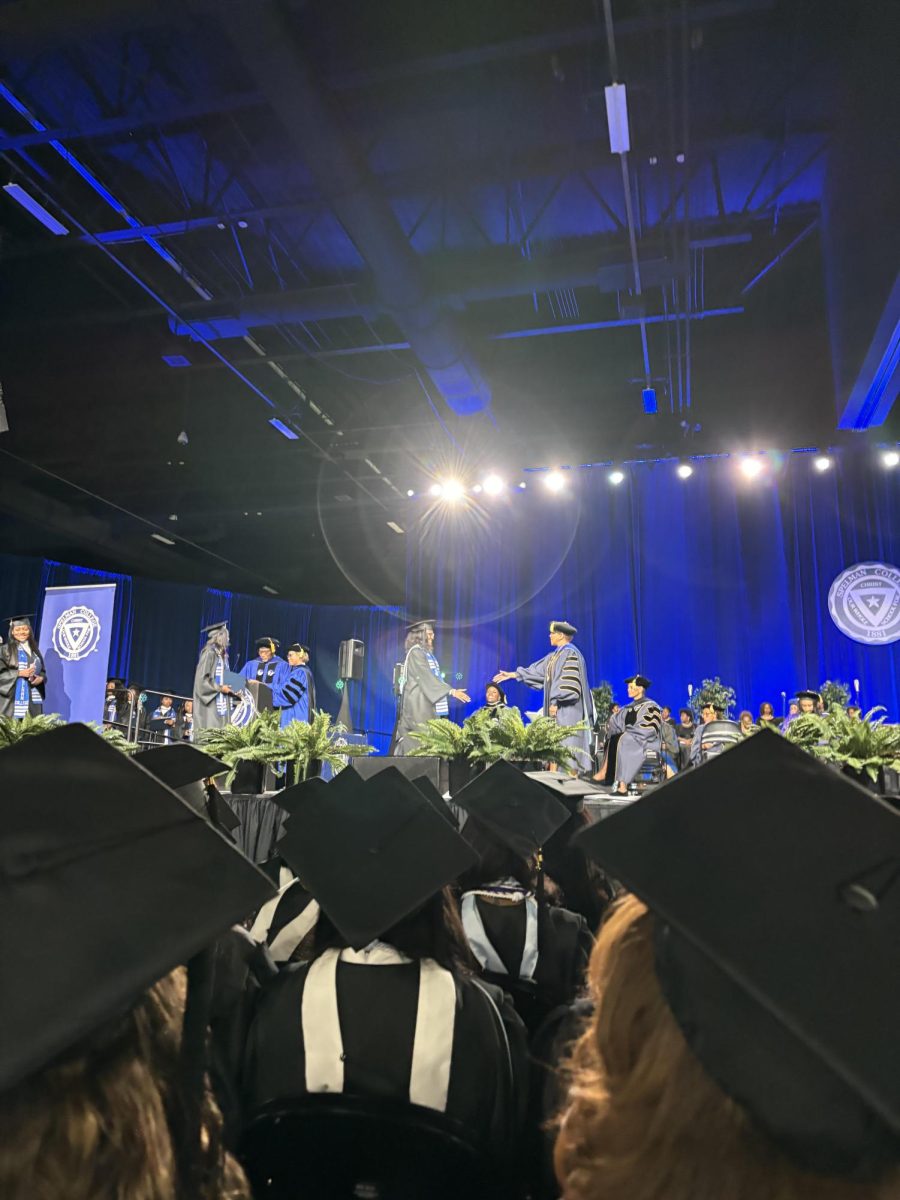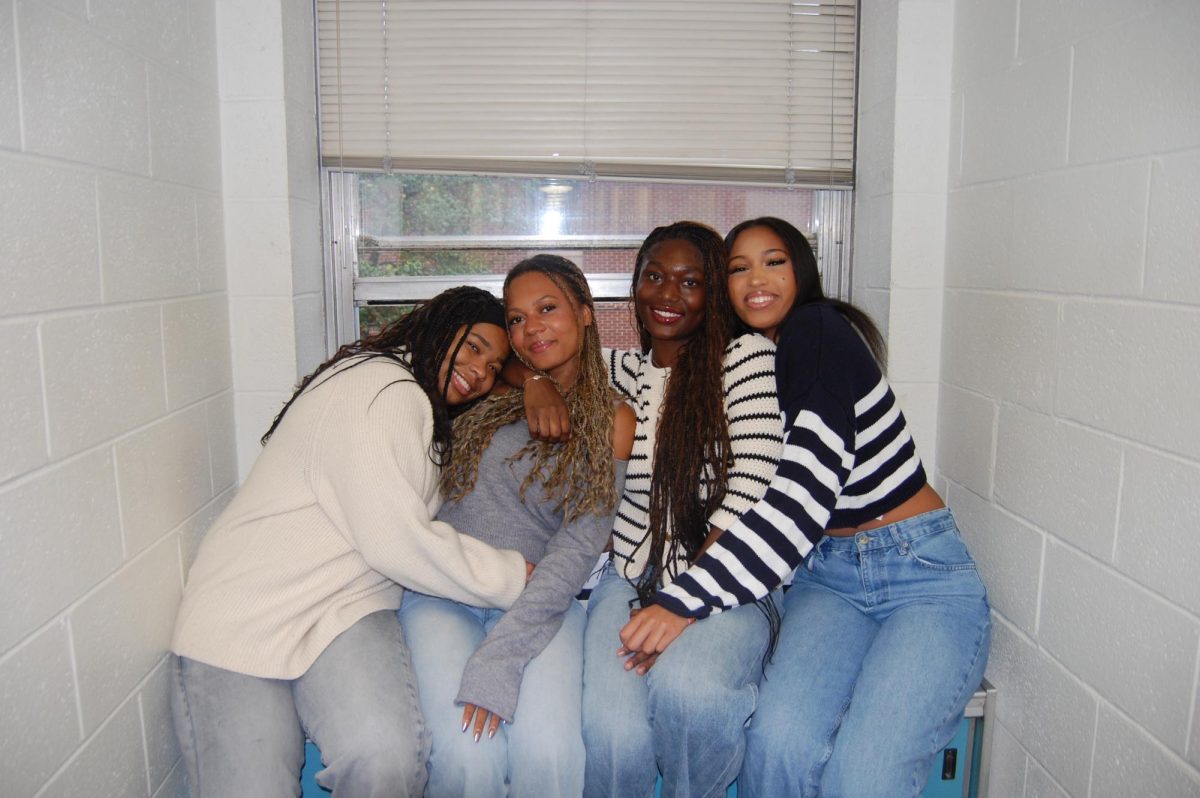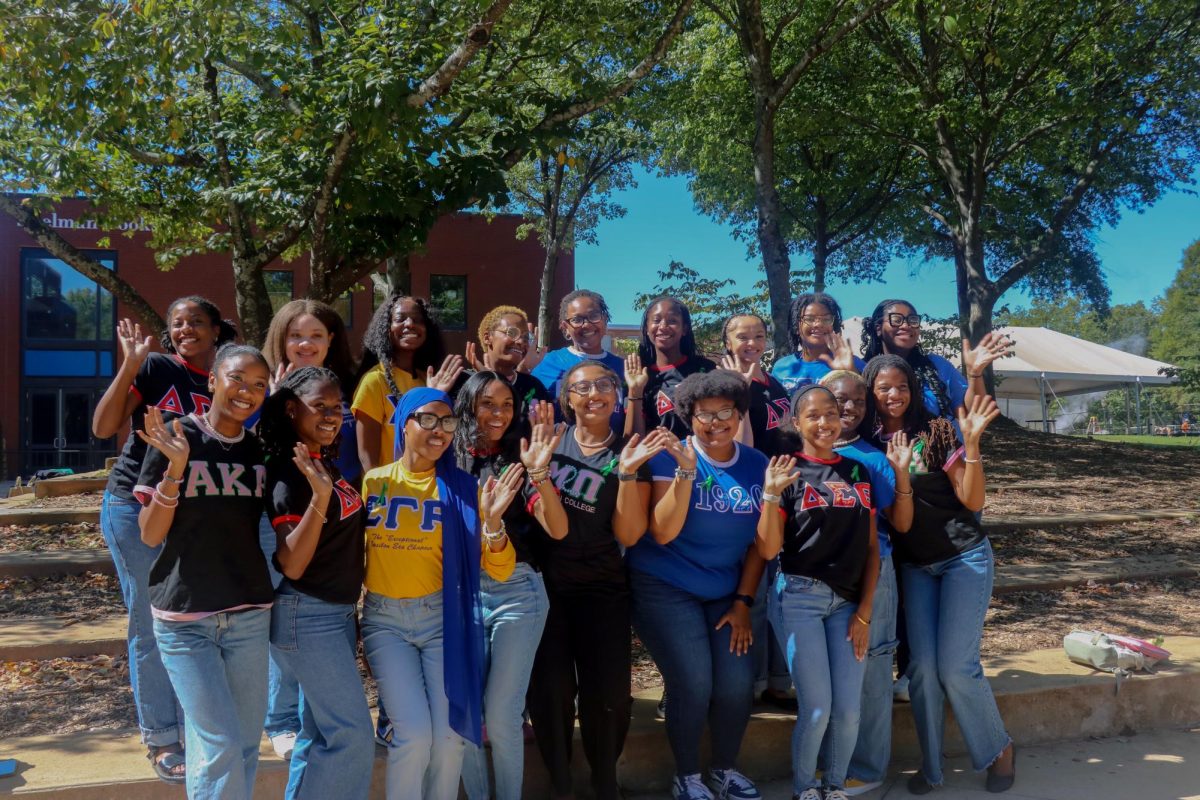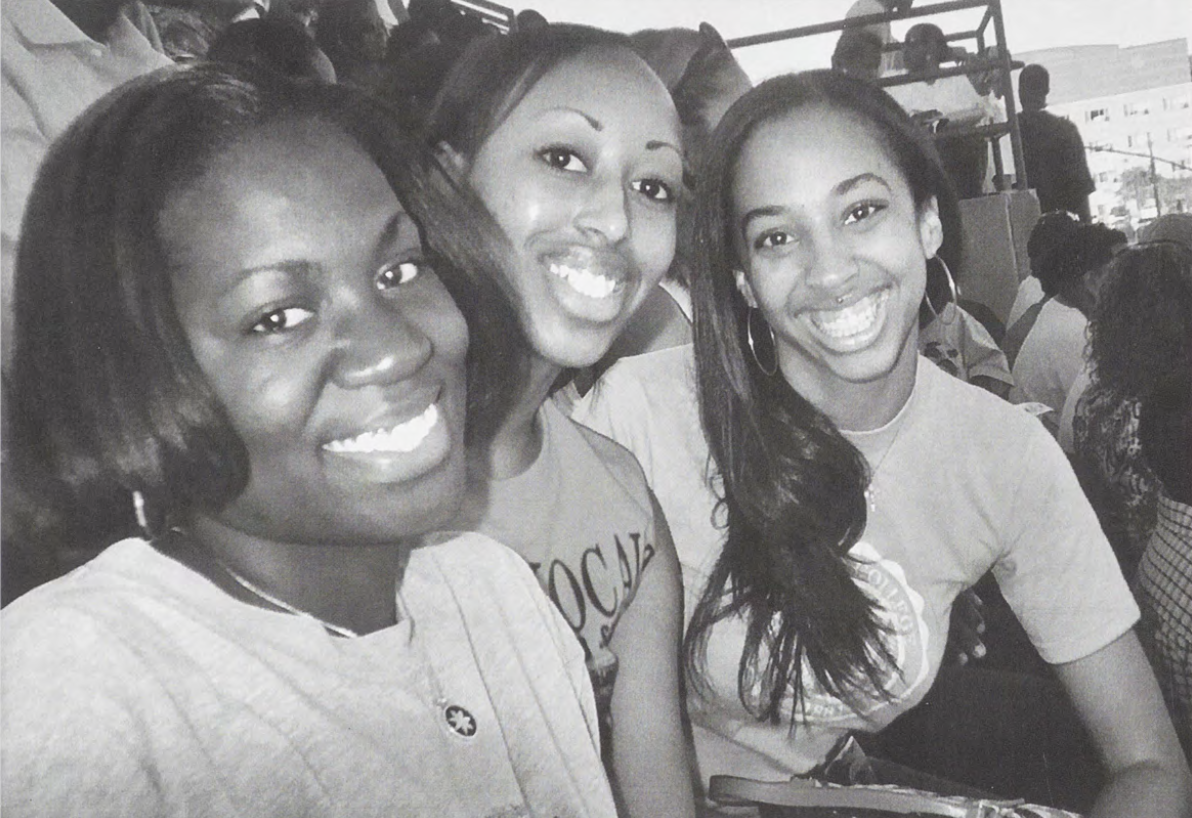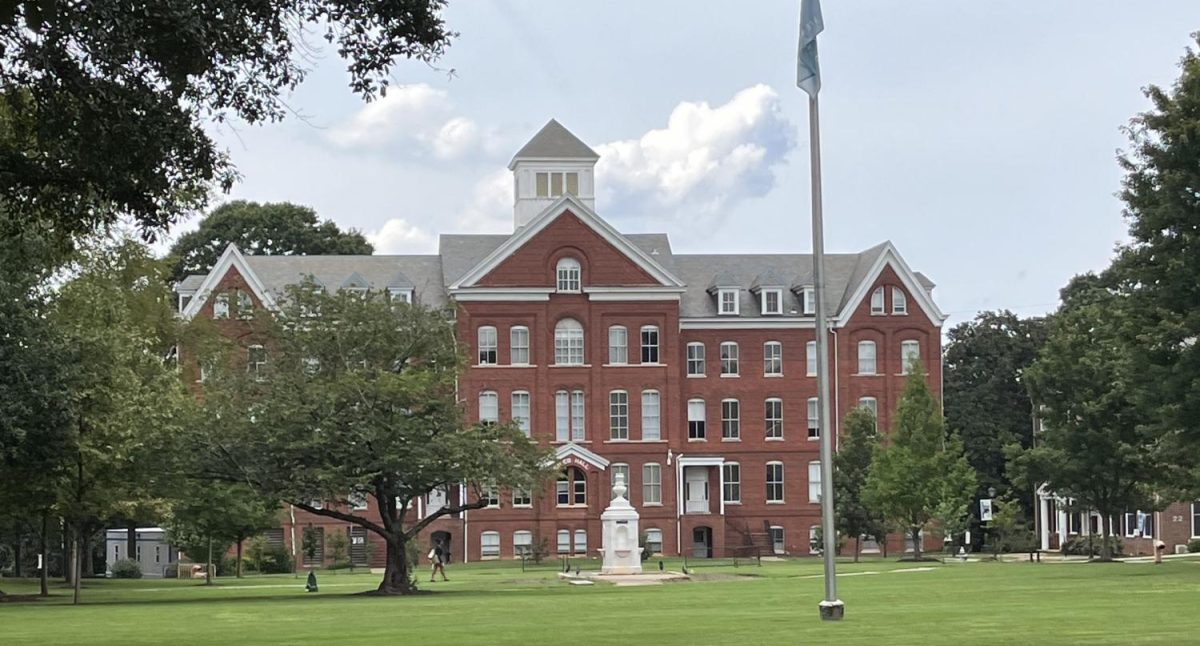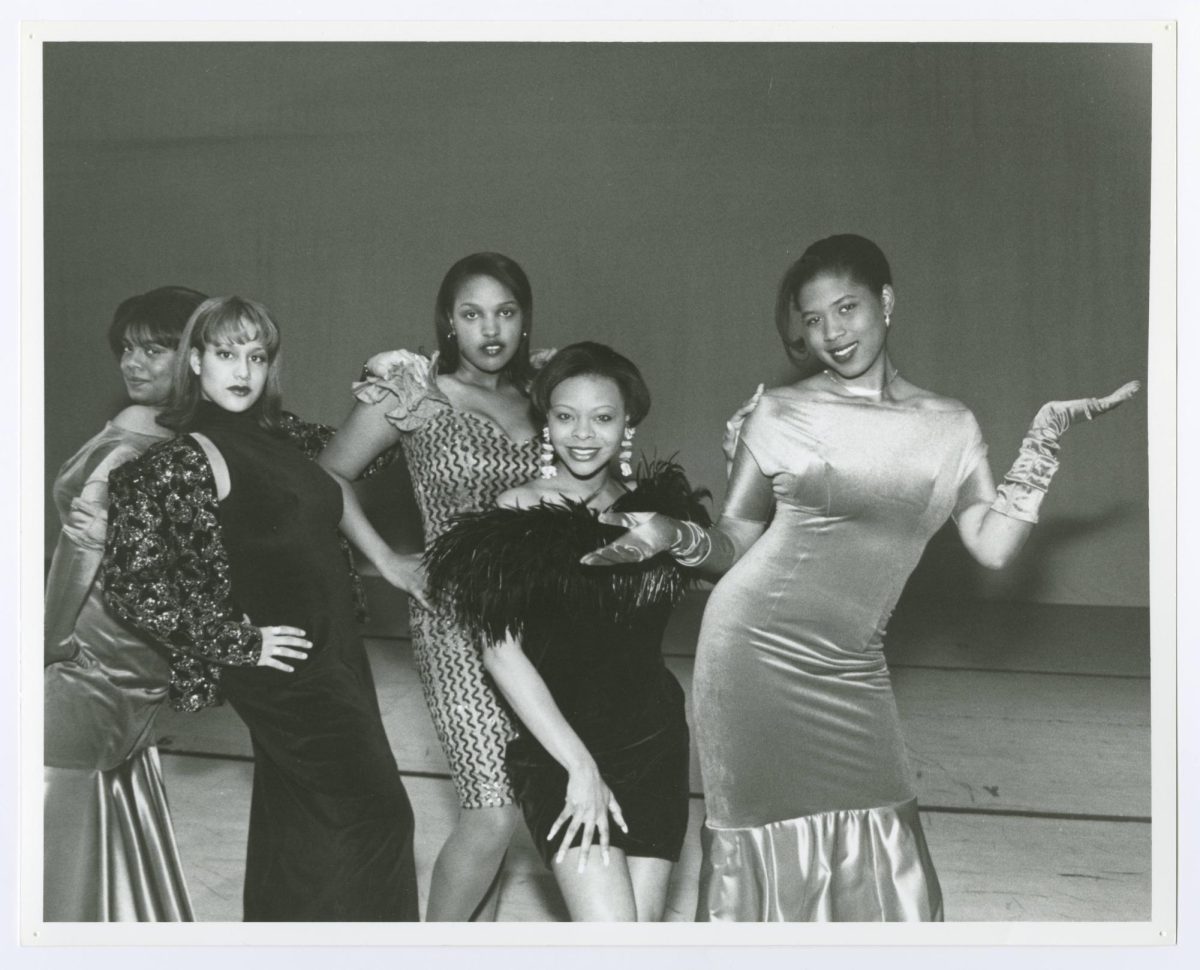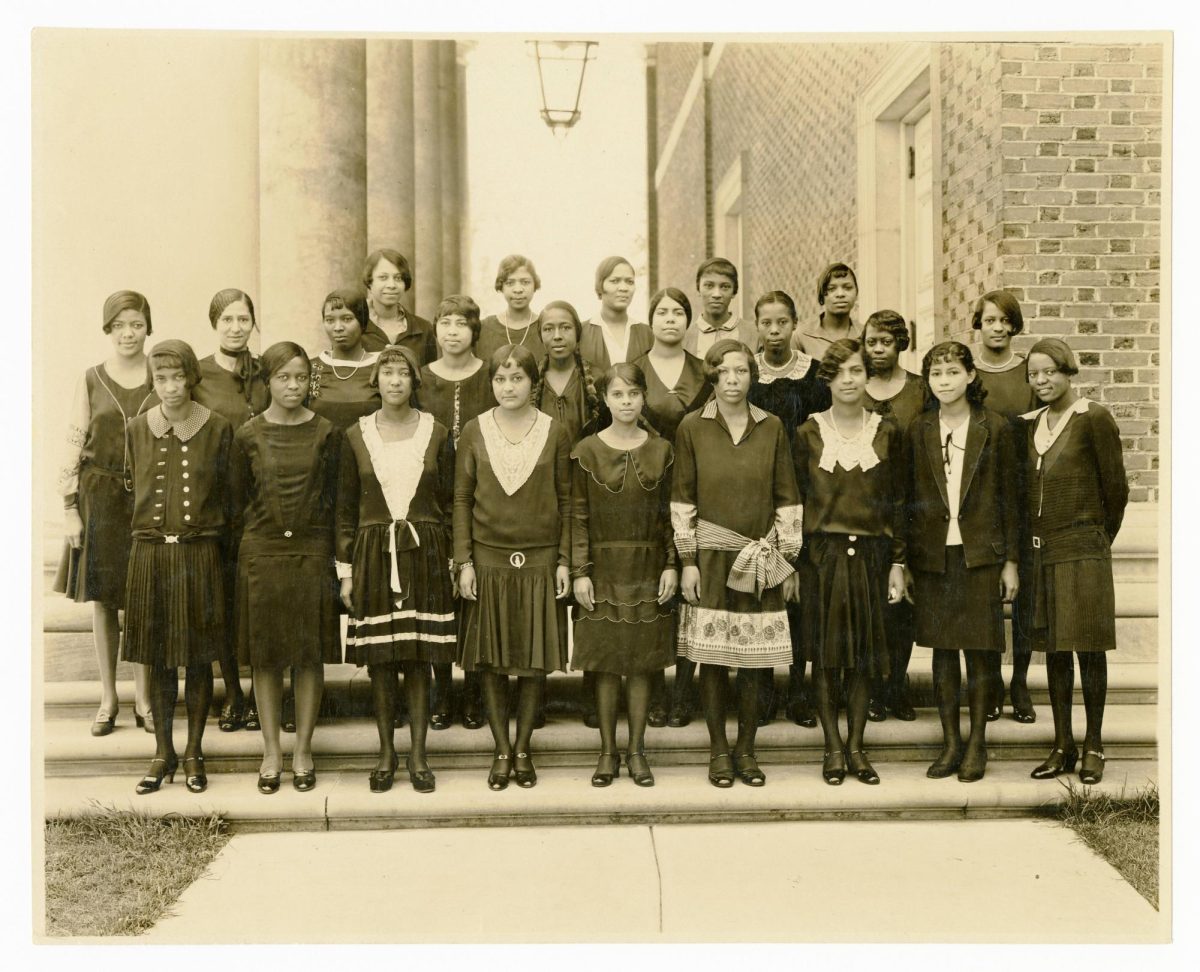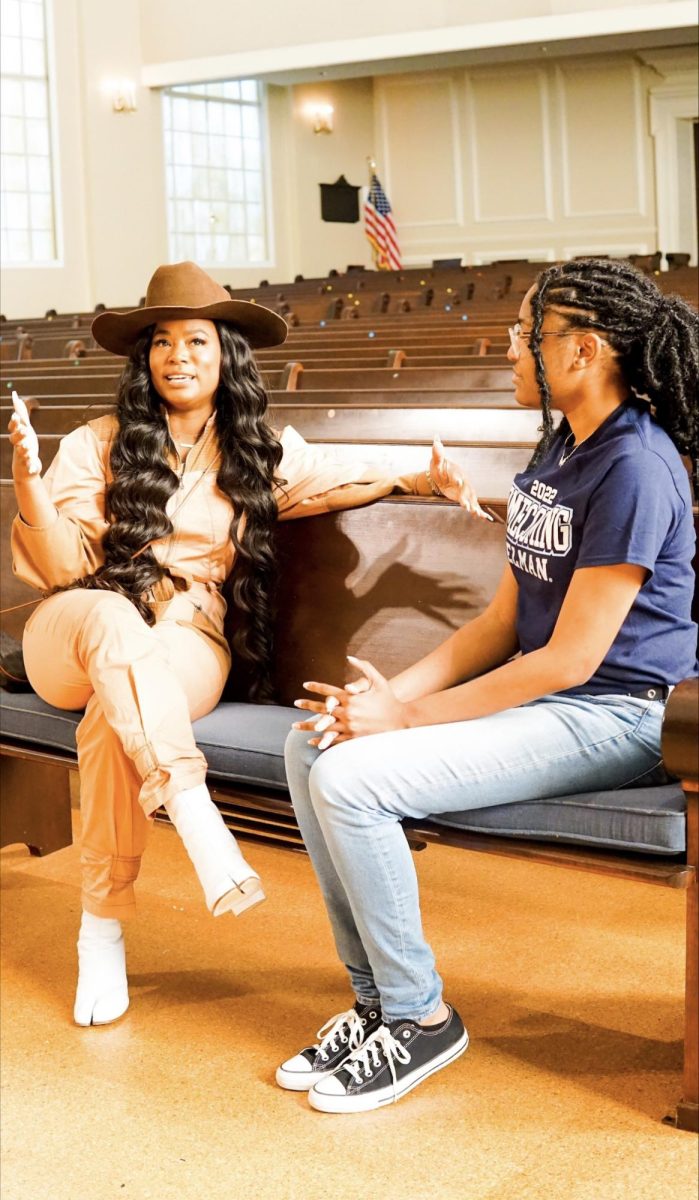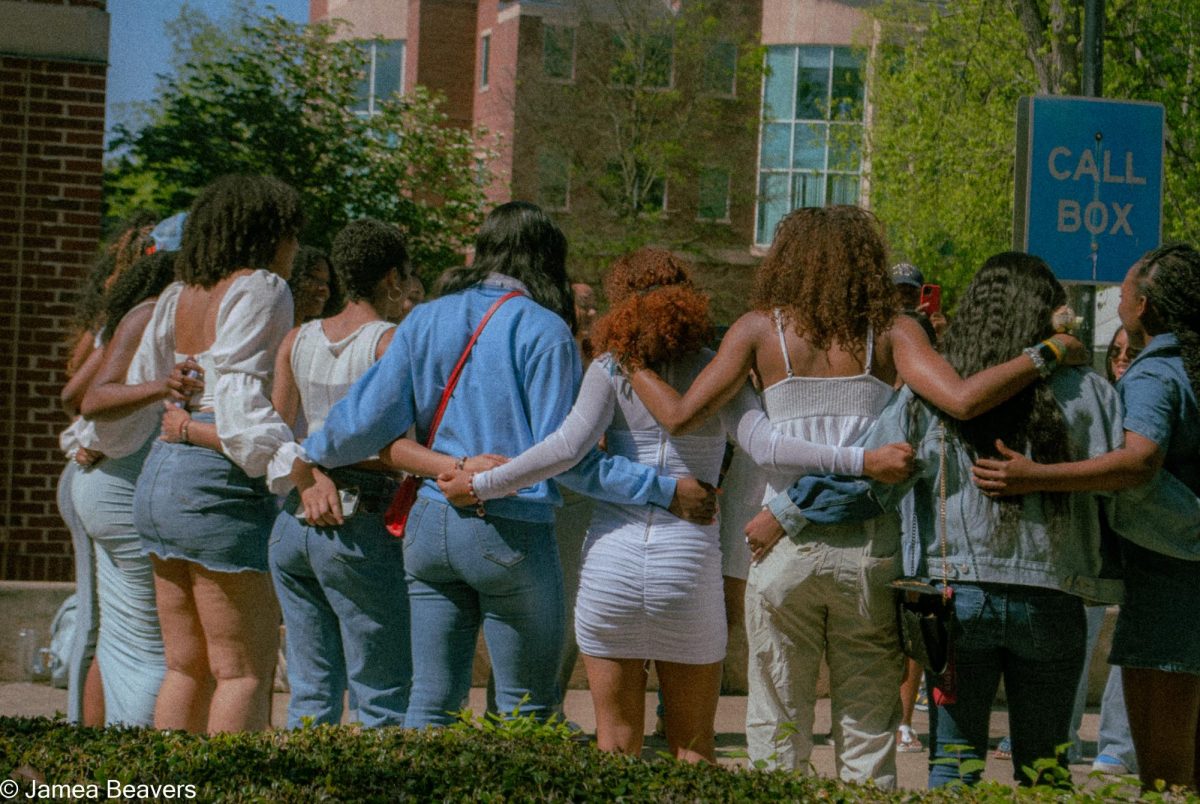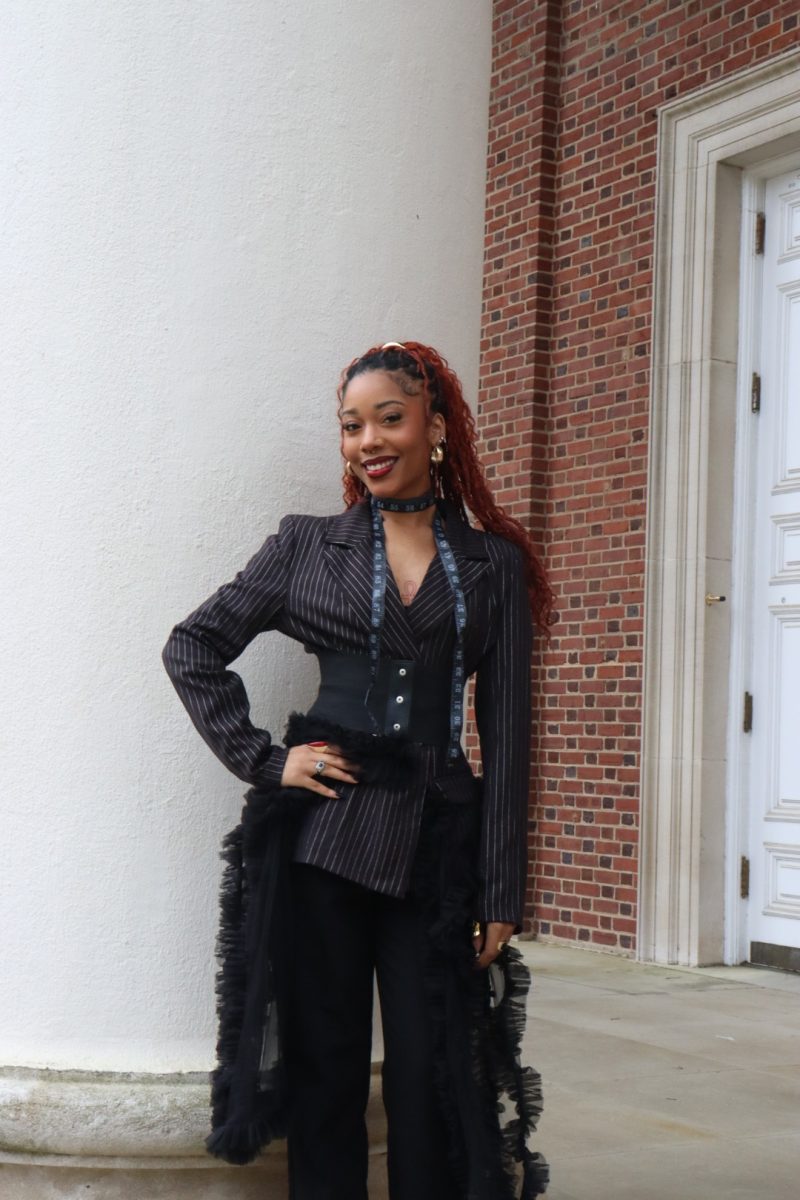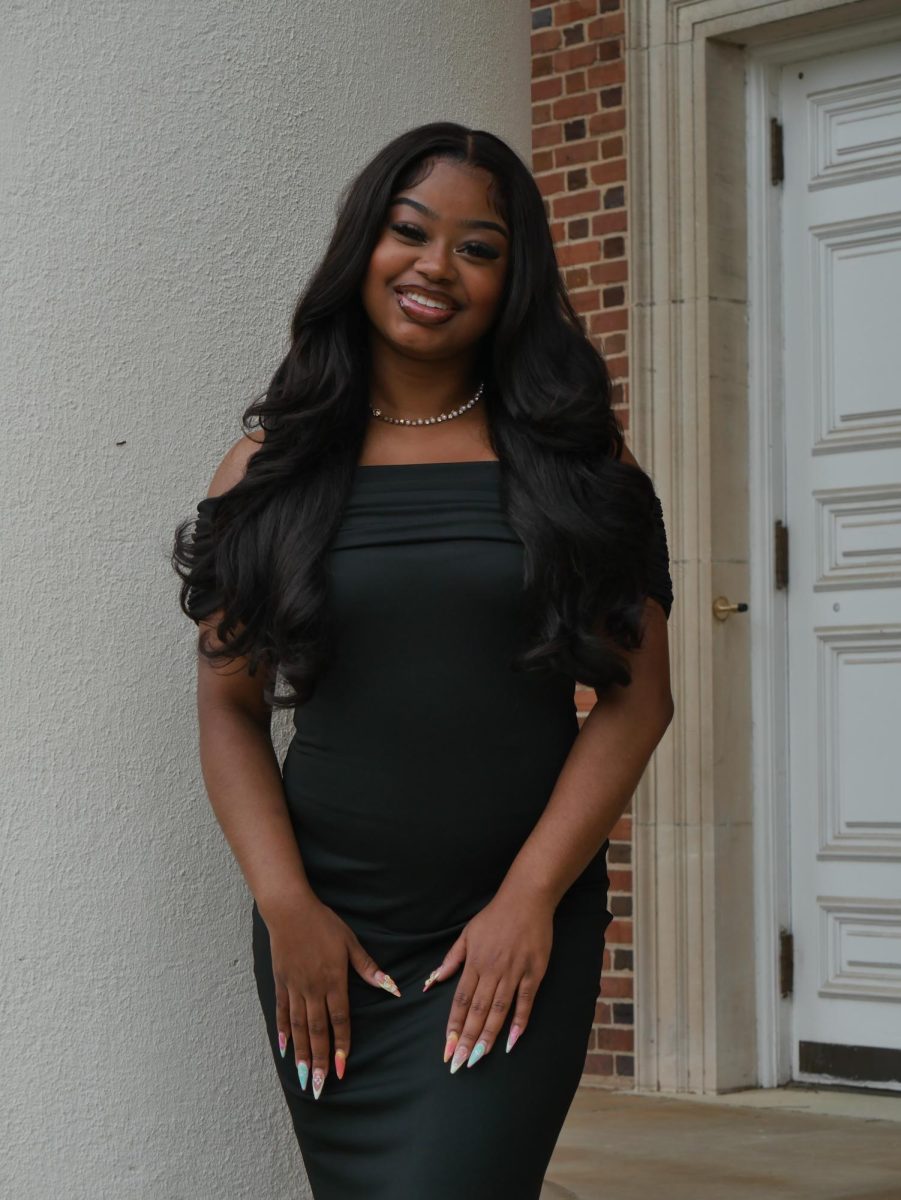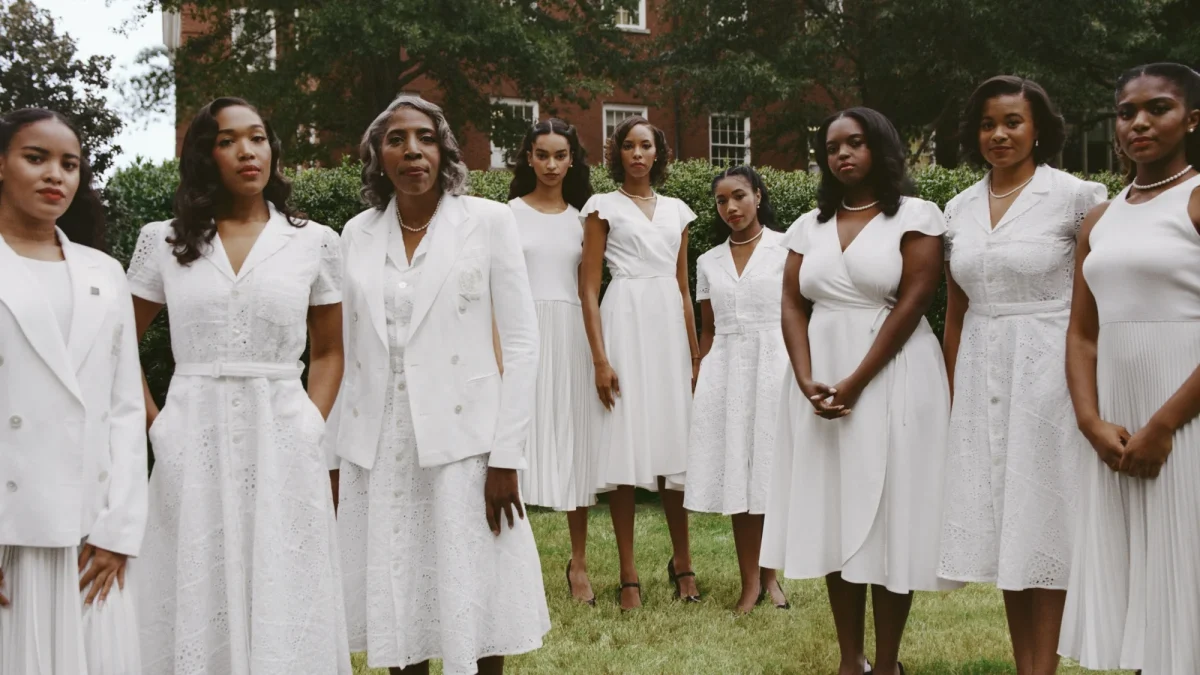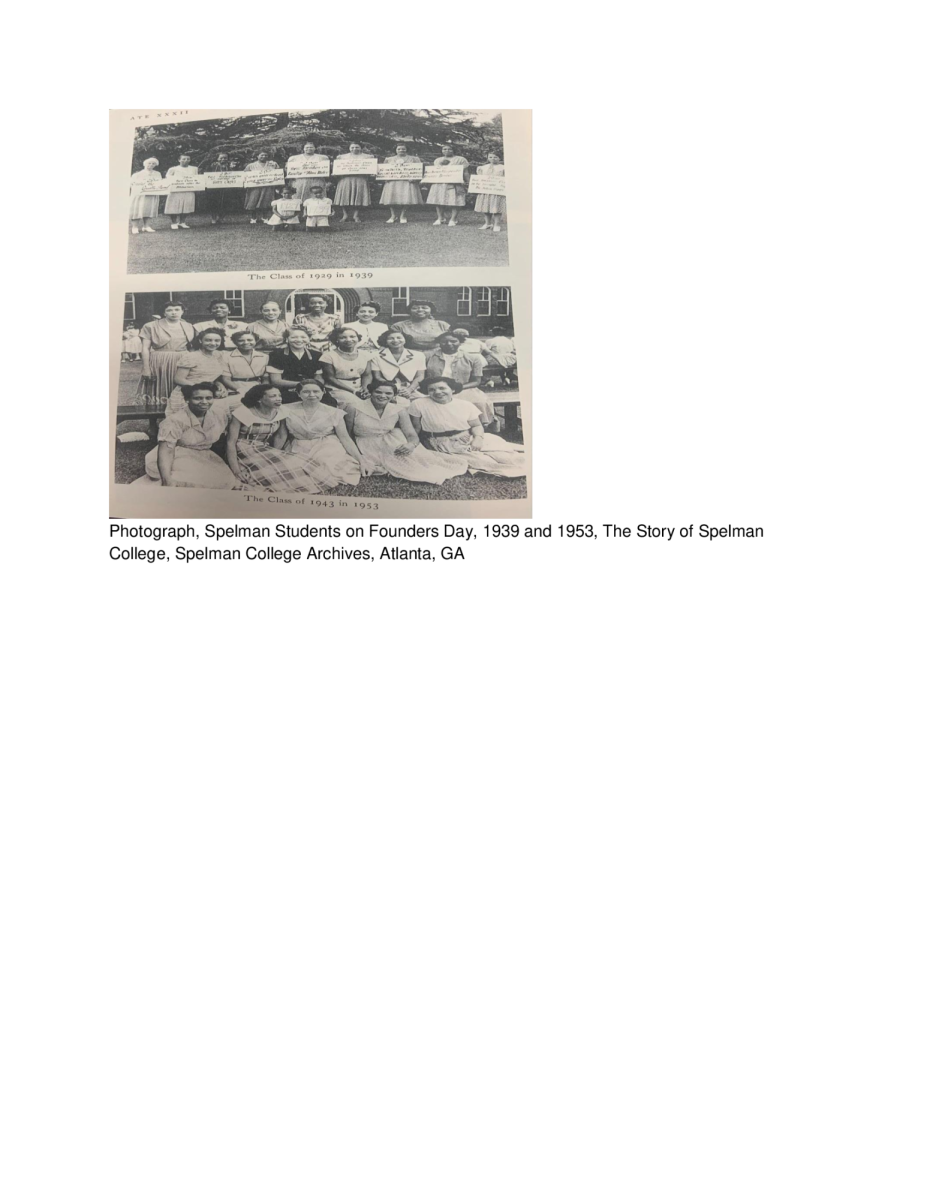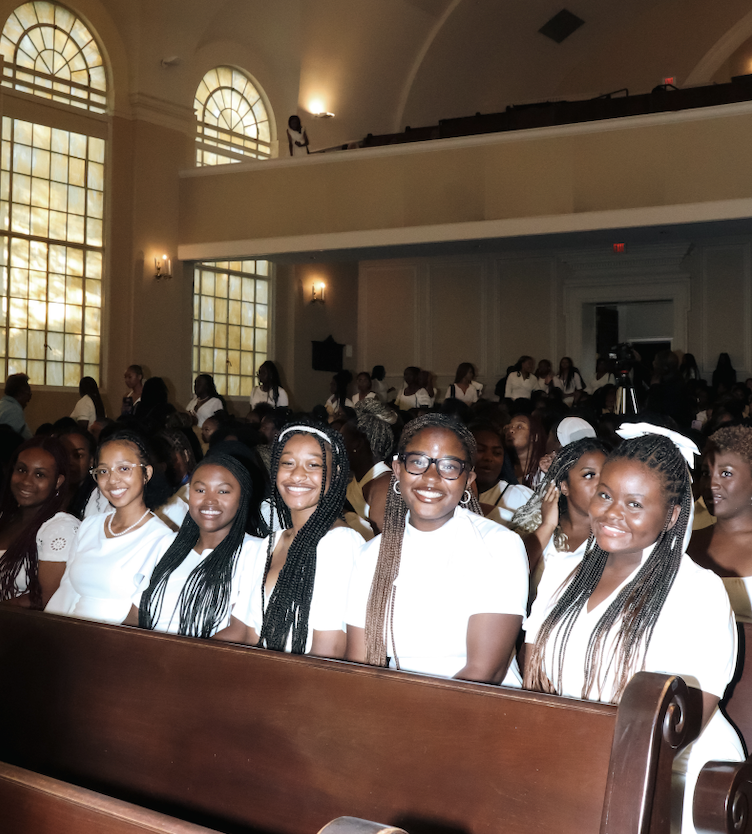*Written by Geanna Gwinn with assistance by Jordan Wooley.
On April 11th each year, Spelman College designates a day to highlight its history and uphold its various traditions known as Founders Day. A standout tradition associated with the occasion is the White Attire Tradition, formerly regarded as the White Dress Tradition, which originated around 1900. Spelman’s official website outlines the tradition, claiming it unifies the relationship between the institution and its students; it stresses the importance of such a tradition, regarding it as “the obligatory commitment for each Spelman student to have a ‘respectable and conservative’ white dress.”
When analyzing the fashion of Founders Day, everything has stayed the same. While the fashion requirement has expanded to include pantsuits and skirts, wearing the “true” shade of white remains. In the previous edition of The Blueprint, formerly known as the Spelman Spotlight, published in April 2007, the issue features a section dedicated to Founders Day activities. One of the main activities was a fashion show curated by Kenneth Green, a Drama and Dance Professor at Spelman College. He discussed what his inspirations were for the fashion show, especially looking towards previous graduating Spelman classes. This speaks volumes about how Spelman College has preserved this beloved tradition for countless generations.
In establishing the context under which the White Attire Tradition, formerly the White Dress Tradition, originated, several themes are heavily echoed, occupying sentiments corresponding with the gender-shaping institutions of language, marriage, religion, and school. In recognizing the role of those institutions, we can dissect how traditional gender expectations continue to be projected on Spelmanites through the White Attire Tradition. Gender is a socially constructed system that classifies and assigns qualities of masculinity and femininity to people, expecting these socialized people to adopt and perform traits associated with the binary genders, male and female. Social constructions embed ideals within cultures, transmitting those beliefs through gender-shaping institutions, which are not limited to Spelman. However, to make ‘A Choice to Change the World,’ students within the space should be allowed to analyze how our institution operates critically. In reviewing several academic journals, we hope to provide a researched basis, elaborating on the interconnectedness of gender and race as it pertains to Spelman.
According to Alicia C. Collins and Bradford F. Lewis, authors of “How Rituals and Traditions Are Used as Tools of Socialization at Black Women’s Colleges, ” the establishment of historically Black women’s colleges involves deliberate acts of socialization and molding of Black women through the mediums of rituals and traditions under the guise of improving race and moral development by white missionaries.” (Collins & Lewis, 2008).
Spelman’s official website displays an inconsistent stance on the White Attire tradition. The photo associated with the webpage is a black-and-white photo of Spelman students in white dresses, favoring tradition. This might be a choice that was thought to honor the tradition. However, a contemporary picture being included would make sense, considering that many photos on the website show modern images of Spelmanites and would paint a better story explaining how the tradition has evolved. The word choice in explaining the tradition alludes to promoting respectability politics, including modifiers such as ‘functional’ for jewelry, ‘sensible’ for black closed-toe shoes, and ‘respectable’ for the white dress. How are students not supposed to view the language as gender-shaping if, in the context of the establishment of Black colleges, Black women were thought to have been stripped of their femininity by slavery and had to be purified?
Students have expressed their grievances about being penalized by alumnae for deviating from such descriptors and wearing suits or platform black close-toed shoes, for example. Given the history, it would make sense that some students would opt for a more contemporary interpretation of the tradition. There is an apparent tug-of-war between the phrases ‘White Attire Tradition’ and ‘White Dress Tradition.’ The website flips back to say that “all first-year students are required to wear this ‘traditional white dress ensemble’ for New Student Orientation.” There is an apparent resistance to “acknowledging time-honored traditions and establishing new and beneficial opportunities.” Otherwise, the language would deem the White Dress Tradition a relic of the past and remove the undertones promoting ideals fitting a particular Spelman woman archetype.
As mentioned in “Heteropatriarchy and the Three Pillars of White Supremacy” by Andrea Smith, “Any liberation struggle that does not challenge heteronormativity cannot substantially challenge colonialism or white supremacy” (Smith 2016). In the requirement of pearls, pantyhose, and a particular emphasis on the white dress, yet a mere tolerance of a pantsuit, there is a push for a rigid, distinct form of femininity and modesty in preparation for a supposed Spelman woman to act under the expectations of one’s gender. Challenging an unattainable version of womanhood in a tradition that was established long before we even had a Black female president, which was not until 1987, will allow us to promote change rather than align ourselves with certain members of the administration or faculty that did not have Black women’s best interests and attempted to put repressive white supremacist ideologies onto students in the founding of the institution.
We had the pleasure of interviewing students of each classification at Spelman with identities ranging from queer, lesbian, gender nonconforming, and more to understand their perspective, one that deviates from the norms of the cis heteropatriarchy. As Audre Lorde describes, the identities most appreciated in American society, characterizing this norm, are “white, thin, male, young, heterosexual, Christian, and financially secure.” The cis heteropatriarchy organizes people in a hierarchy based on heterosexism and the heteronormative assumption that every person is heterosexual, which is considered morally correct, and in turn, marginalizes people who do not identify as heterosexual. Therefore, queerness is seen as deviating from that ‘natural’ or ‘moral’ order.
Nailah Saint-Louis, a second-year student, spoke on heteronormative gender-shaping concepts, such as religion and marriage, present in the tradition, “The dresses being white, they’re like it doesn’t have anything to do with virginity—okay! Then pairing that with the fact that Morehouse wears black suits with red ties and white shirts, and we’re wearing white dresses. And considering that in women’s studies, we discussed that Spelman used to do hymen checks… and they used to do paper bag tests… you can’t hold that at a ‘why is it white?’ outside of that”.
Nailah is indicating that even though Spelman is not intentionally using the color white to associate with heteronormative concepts, it does not necessarily mean the imagery does not reflect that. We cannot talk about the expectations of a Spelman woman without bringing up the expectations of a Morehouse man, as there are some administrators and graduates who even to this day act as puppeteers in orchestrating stereotypical feminine Spelman woman and a masculine Morehouse man archetype as the most ‘correct form’ of manhood and womanhood. Recently, we came across a flyer that reads ‘Say Yes to the White Dress’ as hosted by alumnae. The wedding imagery speaks for itself. Those connections can still be made for systematic reasons, even in the claims that the tradition has nothing to do with purity.
